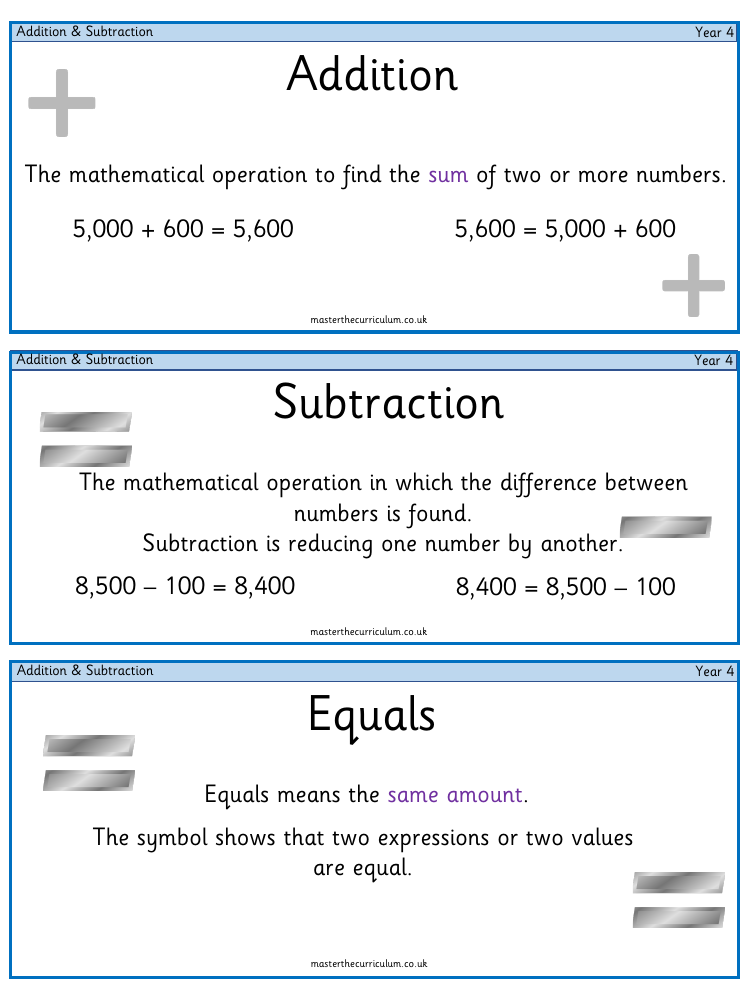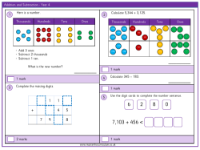Addition and Subtraction - Vocabulary

Maths Resource Description
Addition is a fundamental mathematical operation where two or more numbers are combined to find their total sum. Subtraction, on the other hand, is the process of determining the difference between numbers by reducing one number by another. The term 'equals' is used to denote that the quantities on either side of the equals symbol are the same. For example, '5,000 + 600 equals 5,600' or '8,500 minus 100 equals 8,400', illustrating that the sum or difference is equivalent to the expressions on either side of the equals symbol.
When it comes to performing these operations, the column method is presented as an efficient approach for both addition and subtraction. Numbers are aligned beneath each other to simplify the calculation process. The term 'method' refers to the different strategies one might employ to solve mathematical problems. Additionally, efficiency in mathematics means working in a manner that saves time and effort, such as using known facts instead of the column method for simple calculations. Concepts like 'sum', which is the total result of addition, 'exchange', which involves swapping units of one value for another, and 'rounding', which simplifies numbers while keeping their value close to the original, are also integral to understanding addition and subtraction. Moreover, 'inverse operations' are operations that reverse each other; for example, the inverse of addition is subtraction and vice versa. These key terms are part of the vocabulary assessment for Year 4 students as they master the curriculum in addition and subtraction.


